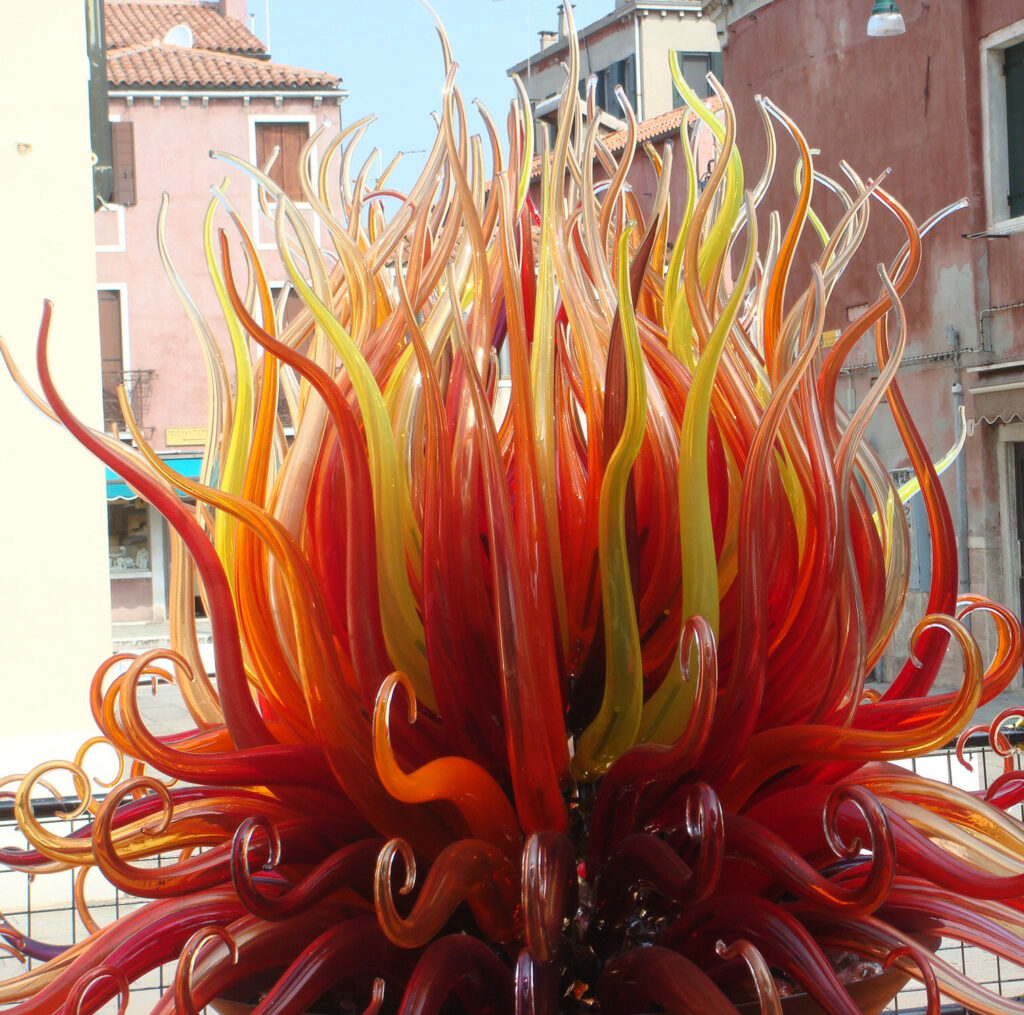
One type of art that frequently amazes me is glass. Compared, for instance, to molding clay, carving wood, chiseling marble, painting frescoes, or marquetry, it seems to me that working with glass is perhaps the most challenging. Glass is made from readily available materials, such as sand, soda ash and limestone. Ironically, although we fret (appropriately) over the vast amount of plastic in the world, glass is even more resistant to decomposing—and much older. Thus, today there are 4,000-year-old works of glass in museums around the world, and for all we know, even older pieces still buried, perhaps in Egypt or Mesopotamia, where it seems glass originated.
Visiting the Corning Museum of Glass occasionally over the last 80 years I have seen artisans creating intricate works, blowing molten glass through a pipe in front of a furnace where the temperature can be greater than 2000F, periodically reheating it in something called “the glory hole.” My daughter has done the same at an arts camp. For utilitarian glass, using molds is much more common, but also complicated. The art of forming, shaping, coloring, and combining pieces is not for the faint-of-heart. Lots of failed works are discarded, although when the failure occurs at the origin, whether molded or blown, the broken pieces can be melted and used again if they are the same color, unlike the glasses and light bulbs we break and toss in the trash at home.
The earliest known glass objects were beads, perhaps initially created as accidental byproducts of metalworking. From the outset, and until relatively recent times, glass products were always a luxury. Historically, poor people did not have glass windows. (A friend’s very early ancestor broke a window at Harvard and was fined a cow!) Most of the glass created over the millennia was made for practical purposes—vessels to hold and store grains and liquids, glasses, windows, etc. But millennia ago, the human instinct to decorate led to the creation of glass as art—jewelry and sculptures, as well as common household items. And the practice has continued ever since.
One of Harvard University’s most famous treasures is the “Ware Collection of Blaschka Glass Models of Plants,” better known as the “Glass Flowers,” created by Leopold and Rudolf Blaschka, father and son Czech glass artists. Between 1886 and 1936 they produced 4,300 models of 780 plant species. Harvard and Cornell also have collections of Blaschka glass marine invertebrates, including octopuses, anemones and even jellyfish. There is presently a special exhibition of Blaschka maritime creations at the Mystic Seaport Museum (through March 2025).
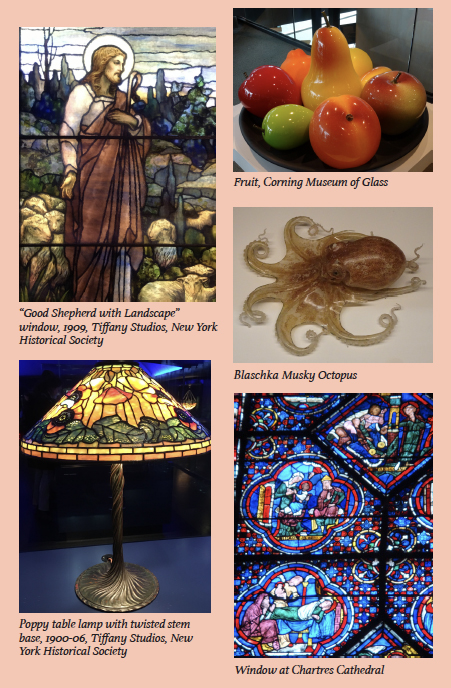
Besides the Corning, there are several smaller museums focused on glass, both here and abroad, in such places as Seattle and Tacoma, WA, and Sandwich, MA, to name a few (that I have not visited). Venice is a virtual glass museum with its mélange of shops featuring chandeliers, miniature gondolas and an endless array of miniature fruits, vegetables and menageries. Production has been concentrated on the island of Murano since the 13th century. Touts scour the Piazza San Marco offering free boat rides to Murano and tours of their ateliers, and of course discounts at their “factory direct” shops. Murano is known for its art glass, but it has a long history of technological innovations and was Europe’s major center for luxury glass from the High Middle Ages to the Italian Renaissance. Murano supports a glass museum and other tourist attractions, and Murano-made Venetian glass art can be found all over the world.
Another essential part of the story sits near Paris in Chartres. The current version of the Chartres Cathedral was built starting in 1194 and marks the high point of French Gothic art, and the same for its stained glass windows, largely facilitated by the innovation of flying buttresses. Notre Dame in Paris and cathedrals in Reims, Rouen, Bourges, Amiens and elsewhere in France are similarly endowed. Originally the windows were designed to teach illiterate people the stories of the bible. Today their beauty overwhelms us.
No discussion of glass as art would be complete without reference to Louis Comfort Tiffany, one of America’s most acclaimed artists. While he embraced many artistic and decorative mediums, his innovative leaded-glass windows, jewelry, lamps, etc., brought him the greatest recognition. Historically, stained-glass windows were created by painting the surface of white and colored glass. However, Tiffany revolutionized the process with innovative uses of colored opalescent glass, which is characterized by a milky translucency that greatly enhances the beauty and warmth of the windows.
Tiffany’s specialized in themed windows for churches, as well as mausoleums, according to a survey underway at the Woodlawn Cemetery in the Bronx. Woodlawn has more than 60 windows, almost all of them inside locked mausoleums now being opened so the contents can be photographed and documented. The New-York Historical Society and The Met both hold substantial collections of Tiffany’s work. In addition, The Met will host a show this summer focused on Edward C. Moore (1827–1891), the creative force who led Tiffany & Co. during the second half of the 19th century.
Despite the current interest in Tiffany and the Blaschkas, I think that works of art in glass generally remain stepchildren in the art field. Watching other visitors to museums, for example at The Met, few stop to look at glass, mostly searching for their favorite paintings. But it is rewarding that so many museums include works of art in glass, in their collections. G&S
Photos by Norman A. Ross

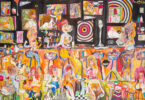

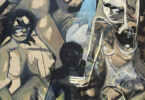
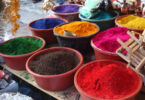
Leave a Comment